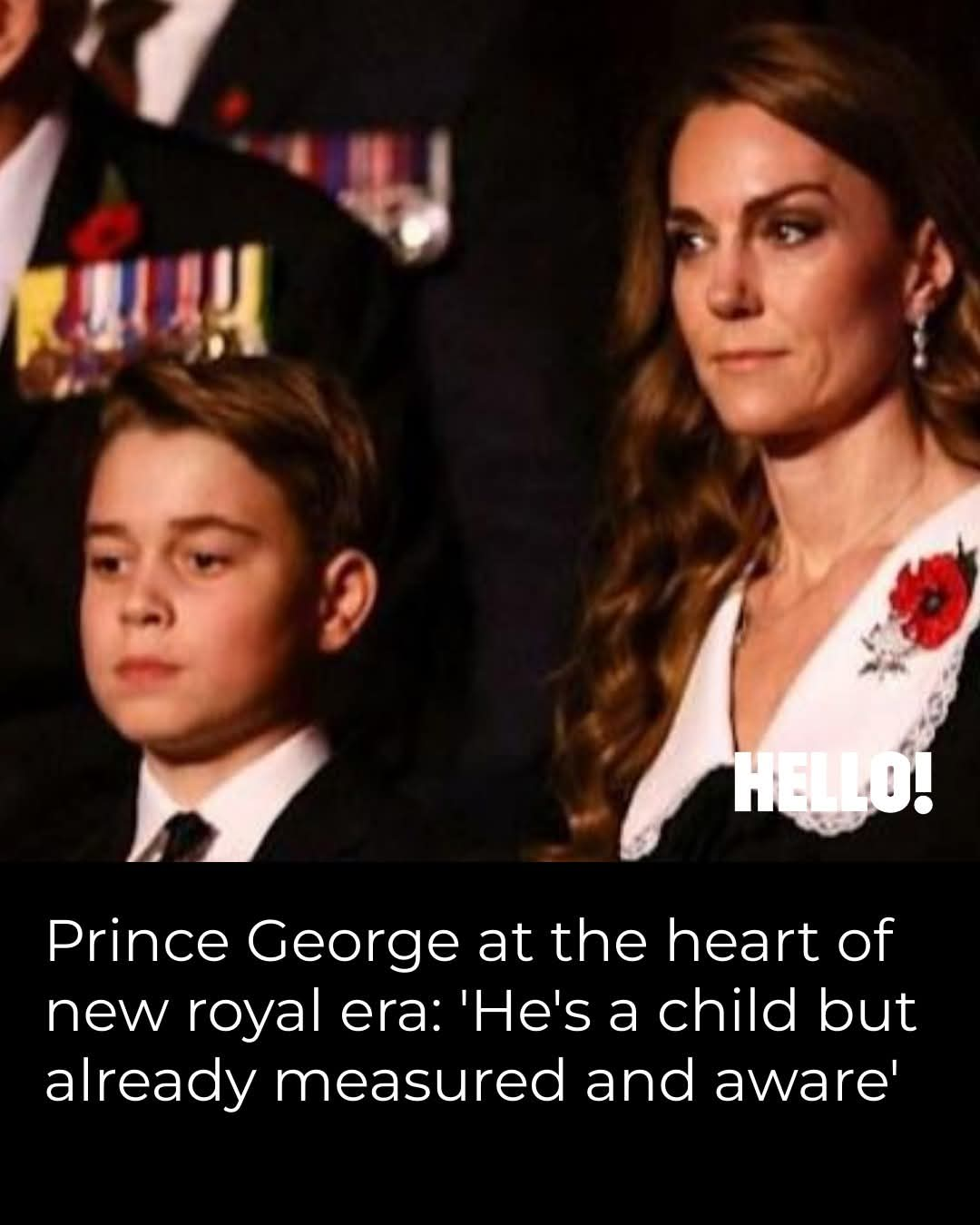ROYAL FAMILY
“The Making of a Future Monarch: How Prince George Quietly Signals a New Royal Era”

In a world where royal roles are under constant scrutiny and the monarchy’s relevance is debated more than ever, a surprising figure has become a focal point of attention — a young boy who is still years away from adulthood. Prince George, second in line to the British throne, is now emerging as one of the most watched young figures in global public life. His recent appearances, particularly alongside key members of the Royal Family at formal events, have sparked interest not only in his future position but in what he represents: a new, more self-aware generation of royalty.
During a recent solemn ceremony, George stood with a composure rarely expected from a child, embodying a quiet understanding of duty and symbolism. Observers noted that his demeanor — thoughtful, calm, and emotionally controlled — hinted at careful grooming, not through pressure, but through gradual exposure to royal responsibility. He appeared neither overwhelmed nor disengaged, but measured, observant, and fully present.
Royal experts often remark that the modern monarchy is being reshaped through subtle generational evolution rather than dramatic reform. Prince George sits at that very crossroads. Born into a world very different from the one his ancestors inherited, he is growing up in a digital, transparent, and emotionally expressive era — one that demands authenticity over perfection. His childhood, though privileged, is also layered with expectation, visibility, and global symbolism.
Unlike past heirs who were shielded from public eyes until adulthood, George is being raised with a carefully balanced approach: protected enough to remain a child, yet involved enough to gradually understand the magnitude of his destiny. This method reflects the modern royal parenting philosophy championed by his parents — nurturing emotional intelligence alongside royal duty.
From small public gestures — such as greeting officials politely, engaging with peers confidently, and acknowledging ceremonial significance — George is already learning that leadership is not founded in authority alone, but in awareness, empathy, and presence. In a time when global leadership demands humanity as much as heritage, he represents the type of monarch who could bridge tradition with progressive relevance.
As the royal landscape evolves — shaped by public expectations, media intensity, and shifting global culture — Prince George stands as a symbol of quiet transformation. Not through speeches. Not through power. But through steady preparation.
He remains, at the heart of it all, still a child — but one who already carries the posture of someone who understands that history is waiting.
—
Closing Line
The future crown may still be far away, but the making of a modern monarch has already begun — and the world is watching.












